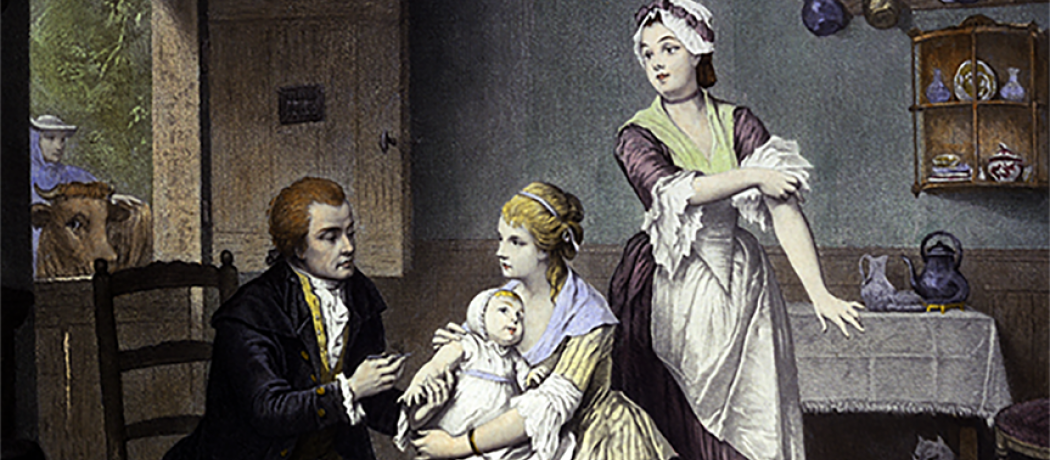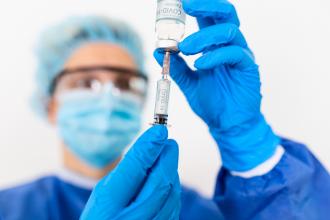Thanksgiving Day is on Monday 12 October. There are plenty of things to worry about right now, but there are also things to be thankful for. This year I hope to raise my glass to Dr Edward Jenner (1749–1823), the titular father of immunology, of smallpox vaccination fame. I have kind of a spiritual connection to him. In 1956 and 1957, at the start of my medical career in North Vancouver, I still had time on my hands and I did some part-time work for the North Shore Health Unit. For 2 years I was the doctor in a white coat vaccinating grade-5 pupils against smallpox.
In the early 1770s Dr Edward Jenner was a favored medical student of Dr John Hunter (1728–1793), the famed anatomist and surgeon. Reportedly, Hunter urged him, “Don’t think, try!” Jenner dared to know and dared to try.
In 1796 he was examining the pustules on the hands of a local milkmaid who was ill with cowpox. He’d heard of people who had cowpox not getting sick with smallpox. He’d also heard about variolation—smallpox exudate being rubbed into an open wound of another person to prevent smallpox. Jenner decided to test the rumor that exposure to cowpox would provide immunity to smallpox. He harvested the fluid from the milkmaid’s pustules and inoculated James Phipps, the 8-year-old son of his gardener. Two months later he tried to infect the child with exudate from a patient with smallpox. The boy did not get sick; he had become immune to smallpox.
Consider the times. In Jenner’s time the cause of smallpox was not known. The cause of infection of any kind was ascribed to mysterious miasma or spontaneous generation. Although Antonie Van Leeuwenhoek (1632–1723) has already seen mysterious animalcules with his primitive microscope some 40 years before Jenner was born, still no one understood what they were. Viruses were discovered by Dmitry Ivanovski (1864–1920) in 1892, 90 years after Jenner first attempted to use either cowpox or smallpox viral exudate for vaccination. Even bacteria were not yet known in Jenner’s lifetime. Robert Koch (1843–1910) identified bacteria and confirmed the germ theory in 1882, 60 years after Jenner’s death. When it comes to physical exams, I don’t think Jenner even knew about the stethoscope, which Rene Laennec (1781–1826) first introduced in 1816 but which took another 20 years after Jenner’s death to catch on.
Jenner’s 1797 report to the Royal Society of his success in immunizing young James Phipps was rejected. He performed additional vaccinations the following year and in 1798 his report, An Inquiry into the Causes and Effects of the Variolae Vaccinae, was published by the Royal Society to a mix of skepticism and interest. Jenner’s groundbreaking work on immunization eventually paid off. In 1979, 156 years after Jenner’s death, the World Health Organization declared smallpox eradicated.
Our thanks and a toast to Dr Edward Jenner on Thanksgiving Day!
—George Szasz, CM, MD
Suggested reading
Biography online. Edward Jenner biography. Accessed 5 October 2020. www.biographyonline.net/scientists/edward-jenner.html
Wikipedia. Edward Jenner. Accessed 5 October 2020. https://en.wikipedia.org/wiki/Edward_Jenner.
Wikipedia. Smallpox vaccine. Accessed 5 October 2020. https://en.wikipedia.org/wiki/Smallpox_vaccine
This post has not been peer reviewed by the BCMJ Editorial Board.


